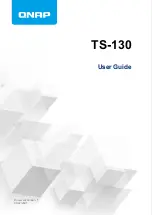
4-3
Cisco BPX 8600 Series Installation and Configuration
Release 9.3.30, Part Number 78-12907-01 Rev. E0, May 2005
Chapter 4 BNI (Trunk) Cards
Broadband Network Interface Cards (BNI-T3 and BNI-E3)
Features
The BNI card features include:
•
BNI-T3 provides three broadband data ports operating at 44.736 Mbps.
BNI-E3 provides three broadband data ports operating at 34.368 Mbps.
•
BNI T3 trunks can transmit up to 96,000 cells per second.
BNI E3 trunks can transmit up to 80,000 cells per second.
•
BNI-T3 utilizes the Switched Megabit Data Service (SMDS) Physical Layer Convergence Protocol
(PLCP).
•
BNI-E3 utilizes the CCITT G.804 framing format.
•
T3 and E3 provide up to 32 class-based queues for each port.
•
24,000 cell transmit buffer per port.
•
800 Mbps backplane speed.
•
Two-stage priority scheme for serving cells.
•
Synchronize the electrical interface to either the line or the BPX switch system timing.
•
Recover timing from the line for synchronizing the BPX switch timing.
•
Accumulates trunk statistics for T3, E3, and OC-3.
•
Optional 1:1 card redundancy using Y-cable configuration for BNI T3 and E3.
Functional Description
The BNI T3 and E3 cards are functionally alike except for the two different electrical interfaces.
Figure 4-2 illustrates the main functional blocks in the BNI-3T3 card.
The DS3 port interface on the BNI-T3 card is the DS3 Function Block, a Physical Layer Protocol
Processor (PLPP) custom semiconductor device, which implements the functions required by the DS3
PLCP as defined in various AT&T
™
technical advisories. This VLSI device operates as a complete DS3
transmitter/receiver. Each BNI-3T3 has three of these devices, one for each of the DS3 ports on the card.
In the
transmit
direction (from the BPX switching matrix towards the transmission facility, referred to
as
egress
), the BNI performs these functions:
•
Software controlled line buildout to match up to 900 feet (275 meters) of ABAM cable.
•
Receives incoming cells from the switch matrix on the BCC.
•
Queues and serves the cells based on the class-of-service algorithm.
•
Sets congestion indication (EFCN) in cell header when necessary.
•
Adds frame sync pattern and PLCP or G.804 overhead and transmits cells onto the T3 or E3 trunk.
In the
receive
direction (from the transmission facility towards the BPX switching matrix, sometimes
referred to as
ingress
), the BNI performs these functions:
•
Receives incoming ATM cells from the DS3 transmission facility, stripping the framing and
overhead from the received bit stream.
•
Determines the address of the incoming cells by scanning the Virtual Path Identifier (VPI)/Virtual
Circuit Identifier (VCI) in the cell header.
•
Queues the cells for transmission through the switch matrix.
Summary of Contents for BPX 8650
Page 49: ...P A R T 1 The BPX Switch ...
Page 50: ......
Page 159: ...P A R T 2 Installation ...
Page 160: ......
Page 273: ...P A R T 3 Initial Configuration and Network Management ...
Page 274: ......
Page 311: ...P A R T 4 Configuring Connections ...
Page 312: ......
Page 487: ...P A R T 5 Troubleshooting and Maintenance ...
Page 488: ......
Page 533: ...P A R T 6 BPX Specifications ...
Page 534: ......
Page 555: ...P A R T 7 Appendices ...
Page 556: ......
















































